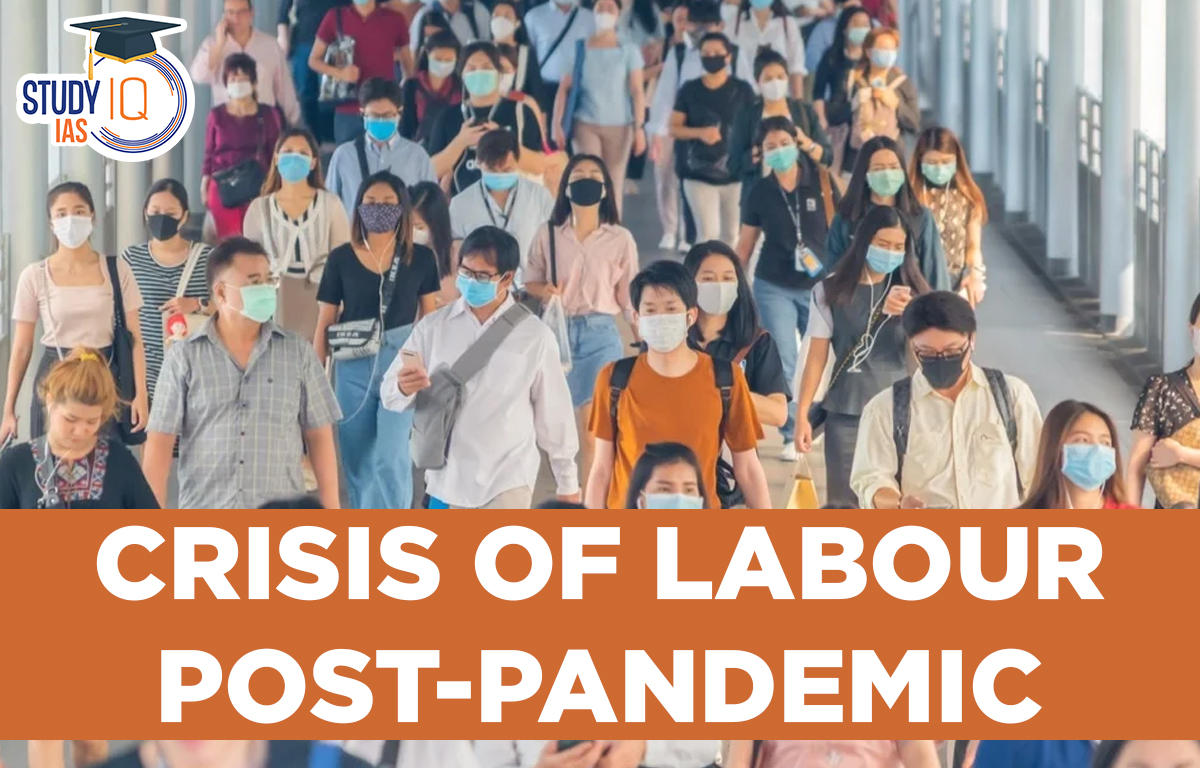Table of Contents
Global Wage Report 2022-2023
The Impact of inflation and COVID-19 on wages and purchasing power
- It discusses the twin crises, inflation and economic slowdown, which created a “striking fall” in real monthly wages around the globe.
- It blames the war in Ukraine and the global energy crisis for this situation.
Asia-Pacific Employment and Social Outlook 2022: Rethinking sectoral strategies for a human-centred future of work.
- It stated that the Asia-Pacific region lost about 22 million jobs in 2022.
- It noted that decrease in wages is placing millions of workers in a dire situation.
- Income inequality and poverty will rise if the purchasing power of the lowest paid is not maintained.
Highlights of Reports
- Decelerating Growth: According to the World Bank’s global economic prospect report, global growth is expected to decelerate markedly from 4.1 per cent in 2022 and 3.2 per cent in 2023 as pent-up demand dissipates and as fiscal and monetary support is unwound across the world.
- Decline in Wages: Global wages were reduced in 2022 for the first time since 2008.
- Monthly Wages have declined by 0.9 per cent in real terms in the first half of 2022.
- This is the first negative growth of real global wages in the 21st century.
- Impact of Covid-19: It impacted human life on a large scale, among all the influenced areas, economic degradation was the stronger one.
- Lesser Earning: Lengthy lockdown months, excess expenditure on health infrastructure and loss of human resources became the major cause for job providers around the world to maintain cost efficiency by laying off employees and cutting out salaries that eventually affect the earnings.
- It led to lesser demand in the market and eventually create an economic condition of recession.
- Poverty Rising: 75 to 95 million people were pushed into extreme poverty during COVID-19.
- Inequality Rising: At the Asia-Pacific level, only the jobs in high-skill occupations saw a recovery from the COVID-19 crisis.
- Though there is an employment gain of 1.6% among high-skill workers between 2019 and 2021, there is no such substantial gain among low-to-medium-skill workers.
- Gender Bias: Men preferred over women in key market sectors.
- Only one of the top ten sectors of employment growth in the Asia-Pacific region favoured employment of women, the accommodation and food service activities, where 55% of added jobs between 1991 and 2021 went to women.
Wage
- It is defined as the total gross remuneration including regular bonuses received by employees during a specified period for time (monthly for the report) worked as well as for time not worked, such as paid annual leave and paid sick leave.
- nominal wage: It shows the adjusted figures after accounting for consumer price inflation.
- Real wage growth refers to the year-on-year change in real average monthly wages of all employees.
International Labour Organisation (ILO)
- It is one of the United Nations agencies that ensure sustained labour law standards across the different world countries.
India Specific Findings in Report
- In India, the nominal wages rose to Rs 17,017 per month in 2021 from Rs 4,398 in 2006.
- Significant gap in the average level of real wages between advanced G-20 countries ($4,000 per month) and emerging G-20 countries ($1,800 per month) such as India is noted.
- Real Wage Growth: After factoring in inflation, the real wage growth in India declined to -0.2% in 2021 from 9.3% in 2006.
- Whereas in China, the growth decreased from 5.6% in 2019 to 2% in 2022.
- Negative growth in India started after the pandemic.
- Impact: Increasing cost of living has the greatest impact on lower-income earners and their households as they have to spend most of their disposable income on essential goods and services, which generally experience greater price increases than non-essential items.
Way Forward
- Strengthen labour market institutions and wage policies: This could contribute to safeguarding the standard of living of households — particularly low-income households — against unexpected future inflation hikes, while avoiding an undesirable wage-inflation spiral.
- Need for well-designed policy measures to maintain the purchasing power and living standards of wage workers and their families.
- Adequate adjustment of minimum wages could be an effective tool, given that 90% of ILO Member States have minimum wage systems in place.
- Creation of decent formal wage employment is a prerequisite for a more equitable distribution of wages and income, and is a key contributor to equitable and sustainable wage growth.
- Collective bargaining and “strong tripartite social dialogue” (between government, employers and workers representatives) can help to achieve adequate wage adjustments during a crisis.
- Governments should focus on gender pay gap as when women leave the labour market, they are less likely to return than men.
- Targeted Approach: Target specific groups, such as providing vouchers to low-income households so they can purchase essential goods, or cutting Value Added Tax (VAT) on these items which will reduce the burden inflation places on households while also helping to bring down inflation generally.
- There is an urgent need to address the negative effects of climate change; increasing inequalities; the poverty, discrimination, violence and exclusion endured by millions of people, including the discrimination that women and girls continue to suffer in many parts of the world.
- Lack of vaccines and access to adequate sanitation and essential healthcare for all.
- Growing digital divide between poor and wealthier countries.
Crisis of Labour Post-Pandemic Conclusion
- Fighting against the deterioration of real wages can help maintain economic growth, which in turn can help to recover the employment levels observed before the pandemic.
- This can be an effective way to lessen the probability or depth of recessions in all countries and regions.





















 WhatsApp
WhatsApp